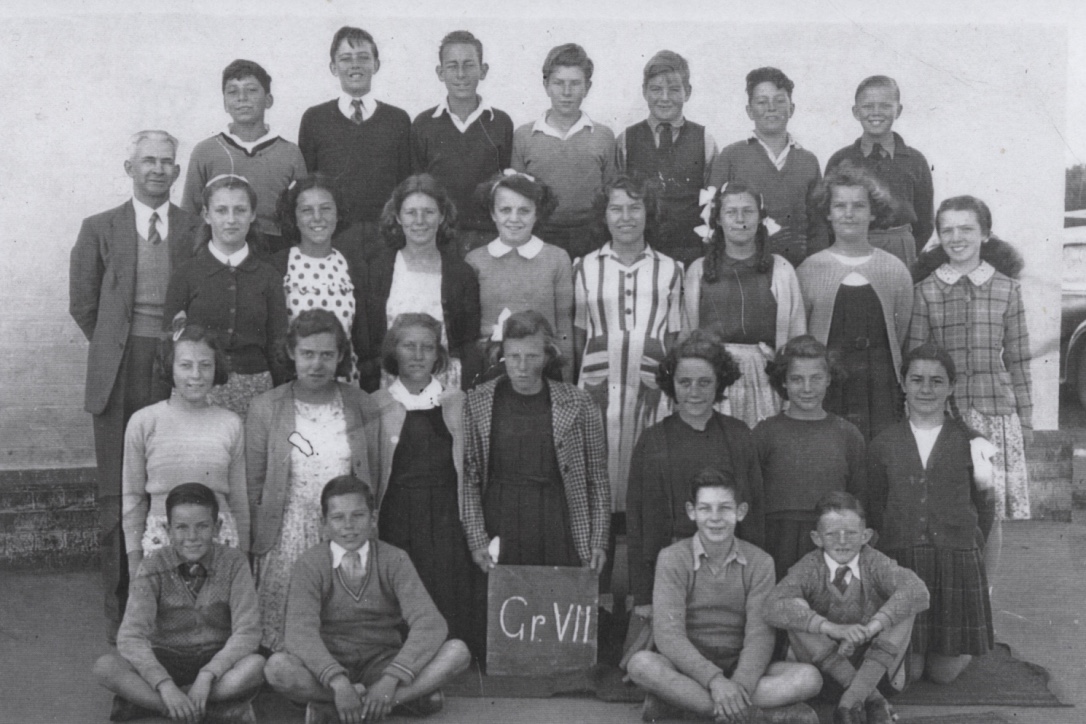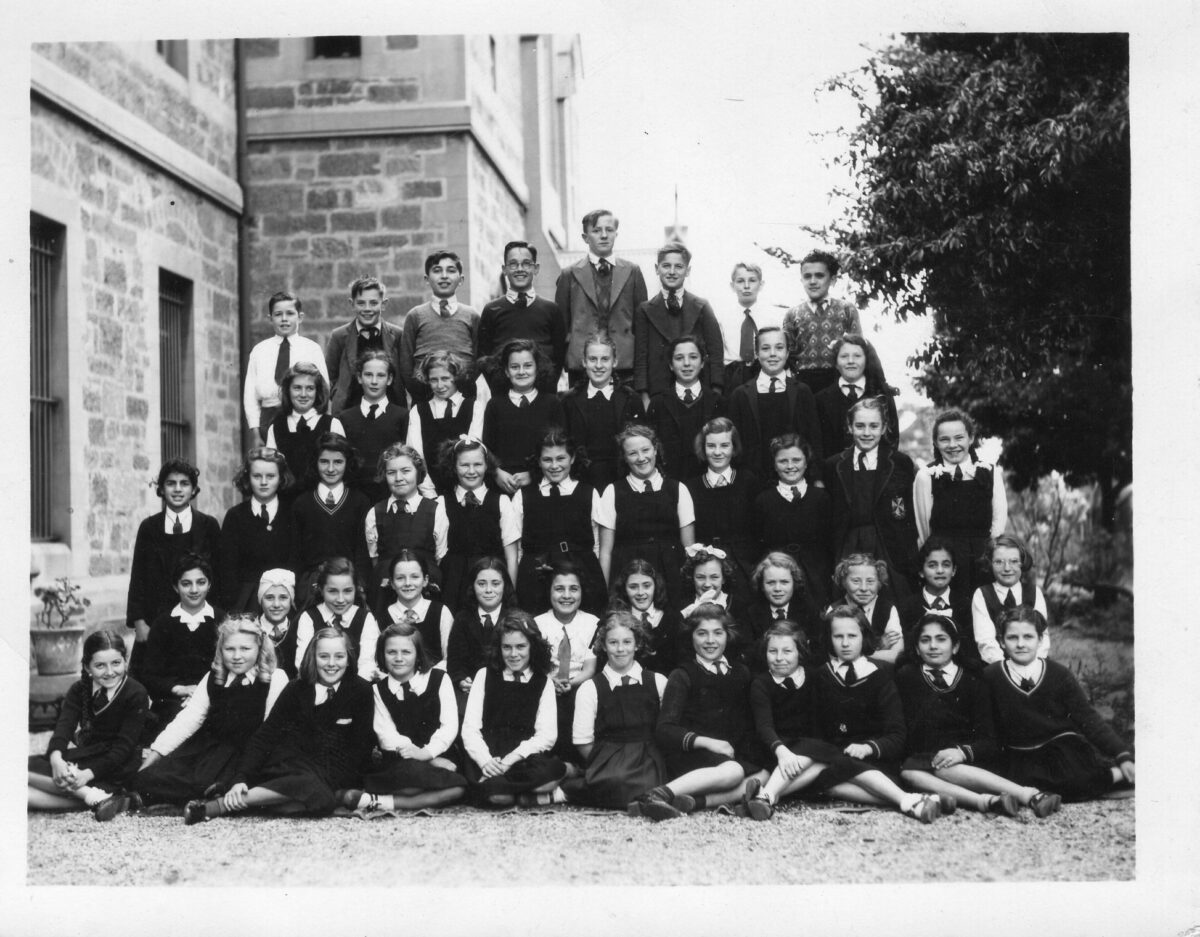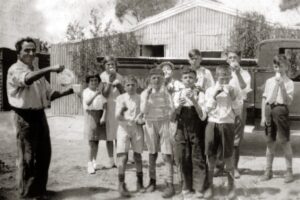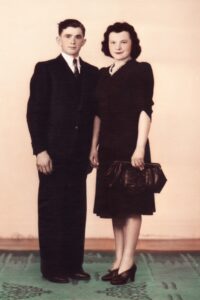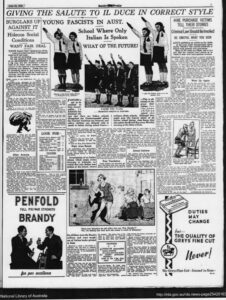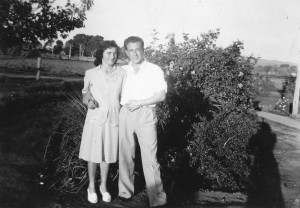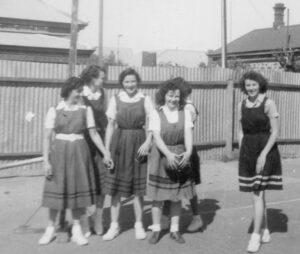Imagine starting school when you’re five and you’re not able to speak the language used in the classroom … Several people born in Adelaide in the 1920s and 1930s interviewed for the oral history project recalled that when they started school, they could not speak English. The following excerpts are from interviews with daughters and sons of Veneto market gardeners who were born in Adelaide in the 1920s and 1930s. In their interviews, they recalled different aspects of their school days.
The image above is the Year 7 class at Underdale Primary School, 1945. Assunta Giovannini nee Tonellato is last on the right in the second row. Photo supplied by Assunta Giovannini.
Lina Rismondo nee Marchioro, OH 872/9, 9 June 2010
Lina was the first child born in Adelaide. to the first generation of Veneto market gardeners. Lina was born in 1927 and because she lived in the city, she mixed with English-speaking girls and she could speak English when she began school in the city. She attended three schools, St Mary’s Convent Franklin Street, Underdale Primary and St Joseph’s Hindmarsh for three years of secondary school.
Because I grew up with Australian girls in Waymouth Street, all my playmates were Australian. I think I grew up with the two languages. Most of us did then. [Then] I went to school at Underdale, State School. [now Flinders Park Primary School]
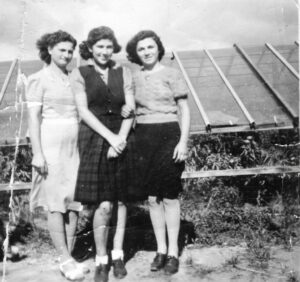
Yes, there was the Tonellato boys and Rosina – sometimes we’d go together, sometimes went on our own, yeah, so in the same school until the priest from Hindmarsh convinced Mum to send me to the Catholic school, so I went to the Catholic school then in Hindmarsh. Yes, I used to come top in grade 7.
Milva Rebuli nee Zampin, OH 872/36, 27 March 2016
After completing primary school, Milva, who was the eldest of nine children, was needed at home to help her mother look after younger children and also assist in the market garden.
I didn’t go to high school. I stayed home and helped in the garden because by then we had about, Dad and Mum had about seven children, eight children, seven… about seven, yeah.
I didn’t have a lot of friends at school. None of us did, I think because we always had to get home early and help in the garden.
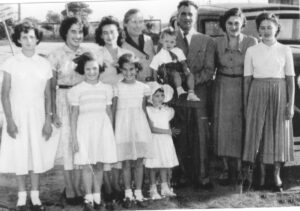
Bruno Piovesan, OH 872/5, 4 October 2008
Bruno Piovesan recalled that after he came home from school he worked in the gardens:
I remember coming home from school, didn’t even know what homework was because we had our chores to do: take the leaves out of the glasshouse when they were pruning tomatoes; hoe around the side of the glasshouse so insects wouldn’t get inside of the glasshouse. Always something to do [pauses and laughs]. We were kept busy all the time. There wasn’t a question of having nothing to do, that’s for sure.
Assunta Giovannini nee Tonellato, OH 872/6, 15 July 2010
Assunta remembered the way she used to go to school with the Piovesan brothers, Nillo, Dino and Bruno:
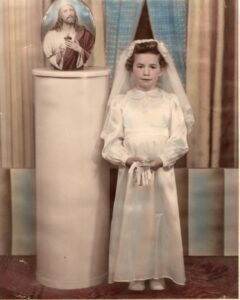
I remember Dino and Nillo used to … we used to what they called donkey on the bike, you know, and Bruno, we used to go to the school and we’d cross all market gardens, like from where we were in between Frogmore Road and Findon Road, we used to … go down the dirt track and then we’d cross over the Ballestrins’ land and … they were all market gardeners, the Zerellas and the Bernos, they were all there, and the school was on Holbrooks Road … we would take about 15, 20 minutes by bike … There was a shortcut crossing through the market gardens, all dirt tracks, but everybody knew everybody … all the Ballestrins would wave out when we’d go past on bike.
Connie Legovich nee Marchioro, OH 872/11 10 January 2011
Connie recalled that she was very happy at Henley Beach convent school for ten years and she has maintained lifelong friendships from those days.
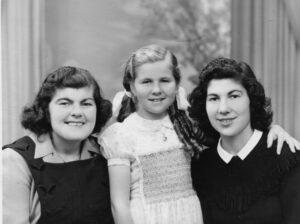
I went to the Convent of Mercy at Henley Beach and I spent ten years there with the nuns. They were beautiful memories where I made lifelong friends with four girls. From the day when we all left school in the ’50s we started socialising twice yearly and then we got to four times a year and now every two months we socialise in each other’s homes with about five others joining us including two nuns. We have kept this up for 55 years and also travelling overseas with one girl.
Frankie Ballestrin OH 872/7, 12 December 2008
Frankie recalled attending primary school during the war years and the drill of going to the trenches. He also remembered assisting his parents to shift glasshouses when he came home from school:
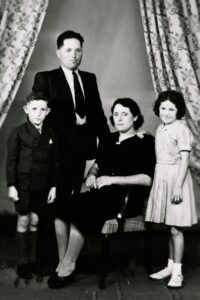
We went to school at the Flinders Park School down here, primary school … I still remember the trenches: when they heard a plane going over they used to take us all out of school into the trenches. And they used to take us to school on a horse-and-sled when it was wet, like in the winter … But we got on well with the kids at school, we sort of got on quite well, and never an argument, never fight.
My cousin and myself, [our] homework … was to drill holes and put up a roof of posts each night we come home from school. Our parents would prepare the rails on the ground and that was the start of setting up your glasshouse. And we put the rail in, then they’d have the rail on top of it and then we’d come home and nail the rafters in. You know, they’d show us what to do, sort of thing. And then carry on from there. And then slide the glass and all the rest. It wasn’t easy.
Jimmy Ballestrin, OH 872/15, 6 June 2011
Jimmy was born in Italy in 1939 and arrived with his mother when he was about a year old. He went to Underdale Primary School, Marist Brothers Thebarton and Christian Brothers College in the City of Adelaide for secondary years and recalled that during those years, he accompanied his uncle Antonio to the market twice a week before school started for the day:
I started first year in Marist Brothers, Thebarton, but I had two cousins that were going to CBC [Christian Brothers College], and I was talked into going to CBC from Thebarton … I did go to the market with my Uncle Antonio … I went with him to the market every Tuesday, every Thursday, before school. He’d come and pick me up at 2 o’clock, and at 8 o’clock or half past eight, I would catch the bus, or walk to school, from then on.
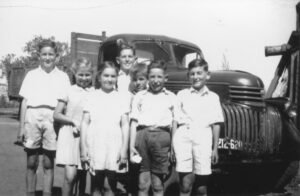
Madeleine Regan
11 February 2024
